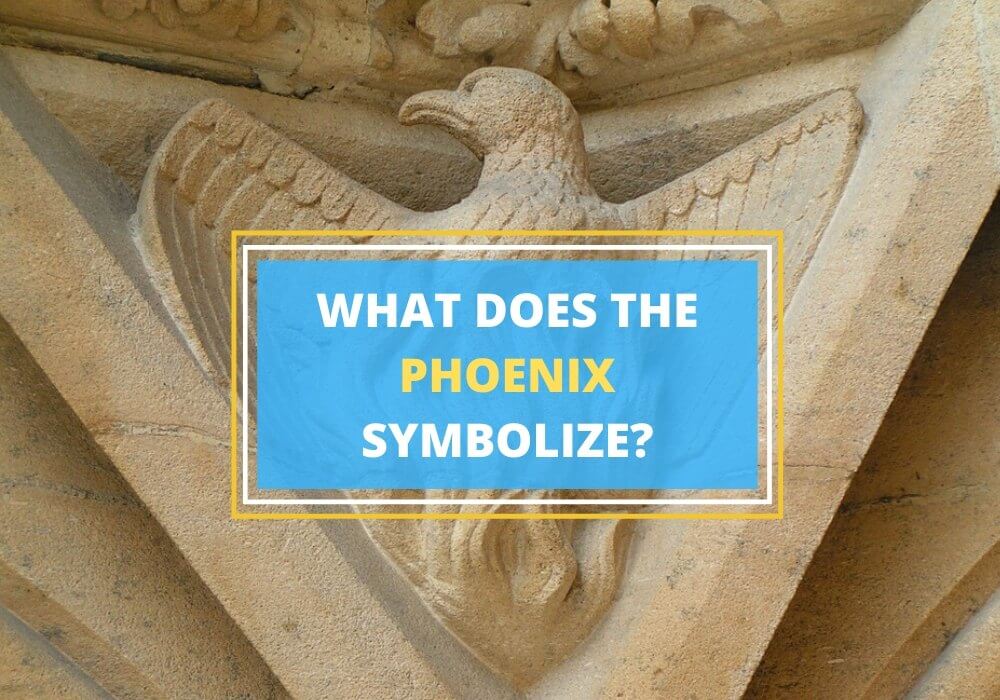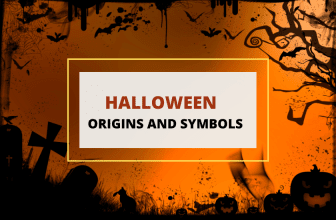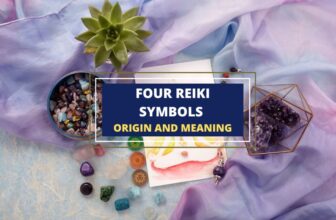
Table of Contents
The image of a magnificent bird that bursts into flames periodically, only to rise from the ashes, has captured human imagination for thousands of years. What is it about the phoenix that continues to endure? We explore these questions and more in this guide on the phoenix symbol.
History of the Phoenix
There are many variations of the phoenix across the globe, such as the simurgh of ancient Persia and the feng huang of China. These birds were of great significance to their cultures, just as the phoenix was to the Ancient Greeks.
The myth of the phoenix comes from Ancient Greece, and has been mentioned by Herodotus, Pliny the Elder and Pope Clement I, among others. However, some believe that the origins of this mythical figure are rooted in Ancient Egypt, where a heron bird called the bennu was worshipped as part of their creation myths.
Bennu was an avatar of Osiris, one of the most important gods of ancient Egypt. One of the first mentions of the bennu comes from the ancient Greek historian, Herodotus, in the 5th century. He skeptically details the Egyptians worship of a sacred bird, stating that the bird:
- Dies every 500 years
- Is fiery-colored
- Is similar in size to the eagle
- Brings the dead parent bird in a ball of myrrh from Arabia to Egypt
There is some speculation that the bennu may have influenced the Greek myth of the phoenix, but this hasn’t been substantiated.
The phoenix was believed to be a colorful bird that stood out from all others. However, the numerous accounts of the phoenix don’t agree on its appearance. Some general points relating to the phoenix appearance include:
- The phoenix was a colorful bird and stood out from other birds because of its coloration
- It may have had the colors of a peacock
- Herodetus states that the phoenix has the colors of fire – red and yellow
- Some sources state that the phoenix had sapphire-blue eyes, while others mention them to be yellow
- The phoenix had yellow gold scales on its legs
- Its talons were pink in color
- Some say it was similar in size to an eagle while other accounts mention the size of an ostrich
Symbolic Meaning of the Phoenix
The life and death of the phoenix make for an excellent metaphor for the following concepts:
- The Sun – The symbolism of the phoenix is often associated with that of the sun. Like the sun, the phoenix is born, lives a set period of time and then dies, only to repeat the whole process. In some ancient depictions of the phoenix, it’s portrayed with a halo as a reminder of its connection to the sun.
- Death and Resurrection – The symbol of the phoenix was adopted by early Christians as a metaphor for the death and resurrection of Jesus. Many early Christian tombstones display phoenixes.
- Healing – Recent additions to the legend of the phoenix claim that it’s tears have the ability to heal people. The simurgh, the Persian version of the phoenix, could also heal mortals, with some claiming that it should be adopted as the symbol of medicine in Iran.
- Creation – Within its decline and death is embedded the seed of the new. Thus, the phoenix represents creation and eternal life.
- Fresh Beginnings – The phoenix dies, only to be reborn, rejuvenated and young. This holds the concept that the end is just another beginning. It’s a symbol of fresh beginnings, positivity and hope.
- Strength – In modern use, the phrase ‘rise like a phoenix’ is used to denote overcoming adversity, emerging from a crisis stronger and more powerful than before.
Phoenix in Use Today
The phoenix is an enduring metaphor that continues to appear in modern popular culture, including in books and movies like Harry Potter, Fahrenheit 451, Chronicles of Narnia, Star Trek and also in music.
In terms of fashion and jewelry, the phoenix is often worn on lapel pins, in pendants, earrings and charms. It’s also popular as a motif on clothing and decorative wall art. The phoenix is typically depicted with large widespread wings and long tail feathers. Because there’s no single accepted image of the phoenix, there are many versions and stylized designs of the bird. Below is a list of the editor’s top picks featuring the phoenix symbol.
Phoenix Tattoos

Phoenix tattoos are a popular theme among those who wish to represent strength, rebirth, renewal, and transformation. It’s especially popular among women. The legendary bird can be stylized in numerous ways and has an appealing aesthetic.
Large, dramatic phoenix tattoos can be mesmerizing to behold. They look ideal on the back, arms, chest, side of the body, or the thigh, while smaller, more delicate versions can suit just about anywhere.
Because the phoenix is such a dramatic image, it can hold the space on its own, not requiring other filler elements. However, if you want to add some other elements to complement the phoenix you can opt for imagery such as flowers, the sun, leaves, trees, water and more. Phoenix tattoos can be colorful, with earthy, fiery colors looking the best, or you can also opt for other styles, such as tribal, realism, and linework.

If you don’t want an entire phoenix bird inked onto your body, consider flaming wings or a flaming feather. This holds the symbolism of the phoenix but offers a more subtle interpretation. What’s more, it also holds the symbolism that comes with wings and feathers.
Phoenix Quotes
Because the phoenix is associated with rebirth, healing, creation, resurrection and new beginnings, quotes about this mythical bird also evoke these concepts. Here are some of the most popular quotes about the phoenix.
“And just as the Phoenix rose from the ashes, she too will rise. Returning from the flames, clothed in nothing but her strength, more beautiful than ever before.” — Shannen Heartzs
“Hope rises like a phoenix from the ashes of shattered dreams.” – S.A. Sachs
“The phoenix must burn to emerge.” — Janet Fitch, White Oleander
“Stars are phoenixes, rising from their own ashes.” – Carl Sagan
“And let it direct your passion with reason, that your passion may live through its own daily resurrection, and like the phoenix rises above its own ashes.”- Khalil Gibran
“What matters most is how well you walk through the fire.” — Charles Bukowski
“I no longer feared the darkness once I knew the phoenix in me would rise from the ashes.” — William C. Hannan
“I can be changed by what happens to me. But I refuse to be reduced by it.” — Maya Angelou
“Don’t hoard the past. Don’t cherish anything. Burn it. The artist is the phoenix who burns to emerge.” – Janet Fitch
“A heart filled with love is like a phoenix that no cage can imprison.” — Rumi
“From the ashes, a fire shall be woken, A light from the shadows shall spring; Renewed shall be blade that was broken, the crownless again shall be king.” – Arwen, ‘L.O.T. R. – The Return Of The King
“Our passions are the true phoenixes; when the old one is burnt out, a new one rises from its ashes.” – Johann Wolfgang von Goethe
“The phoenix hope, can wing her way through the desert skies, and still defying fortune’s spite; revive from ashes and rise.” – Miguel de Cervantes
“Once you’ve had your life burn down, it takes time to be a Phoenix.” – Sharon Stone
“The wild woman rises like a phoenix from the ashes of her life, to become the heroine of her own legend.” – Shikoba
“Ready must thou be to burn thyself in thine own flame; how couldst thou become new if thou have not first become ashes!” — Friedrich Nietzsche, Thus Spoke Zarathustra
FAQs
As a bird that is said to periodically burst into flames and then rise from the ashes, the phoenix represents resurrection, life, death, birth, renewal, transformation, and immortality, to name a few.
No, the phoenix is a mythical bird. It exists in different versions in various mythologies. In Greek mythology, it’s known as the phoenix, but here are some other versions:
• Persian mythology – Simurgh
• Egyptian mythology – Bennu
• Chinese mythology – Feng huang
The phoenix is depicted as a female bird. The phoenix is also a given name and can be used for both boys and girls.
The phoenix itself isn’t a god, but it’s associated with gods of Greek mythology, most notably Apollo.
In mythology, the phoenix wasn’t an evil bird.
If you have the name Phoenix, you’re a born leader. You’re motivated, strong, and take setbacks without flinching. You’re focused and work confidently towards your goals. You don’t like doing unimportant things, but instead focus on what matters. You’re willing to work hard and endure difficulties as long as you’re consistently moving towards your goals. Your decision making skills are strong and you’re able to pave your own path.
While the idea of the phoenix had existed long before Christianity came into being, the myth offered the perfect metaphor for the immortal soul as well as for the resurrection of Jesus Christ. As such, the phoenix symbolizes two important aspects of the Christian faith.
In Brief
The legend of the phoenix appears in many cultures, with slight variations. In the Western world, the phoenix remains the most popular of these mythical birds. It continues to be a metaphor for new beginnings, the cycle of life and overcoming adversity. It’s a meaningful symbol and one that most people can relate to.











